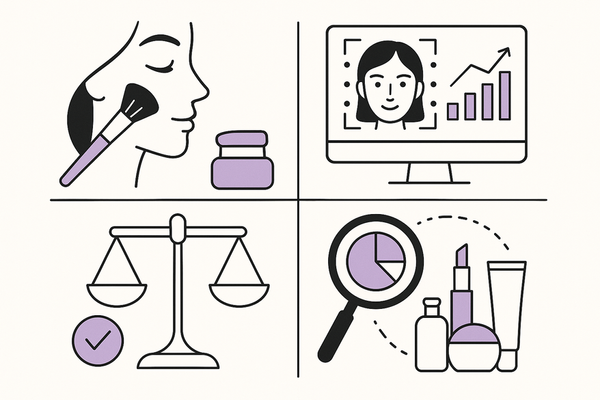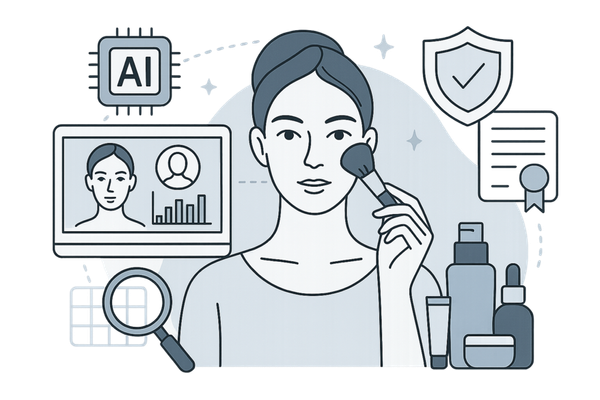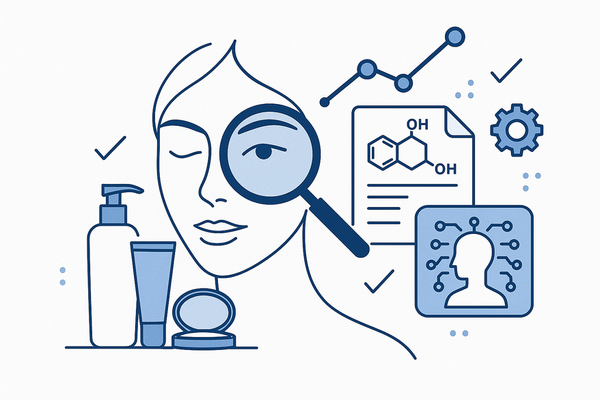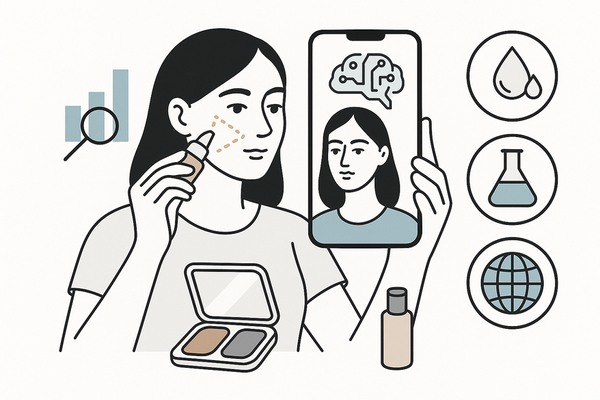Multicultural Makeup Techniques: Tradition Meets AI Innovations
Explore multicultural makeup techniques blending traditional artistry with an AI makeup generator for personalized, respectful beauty across skin tones.
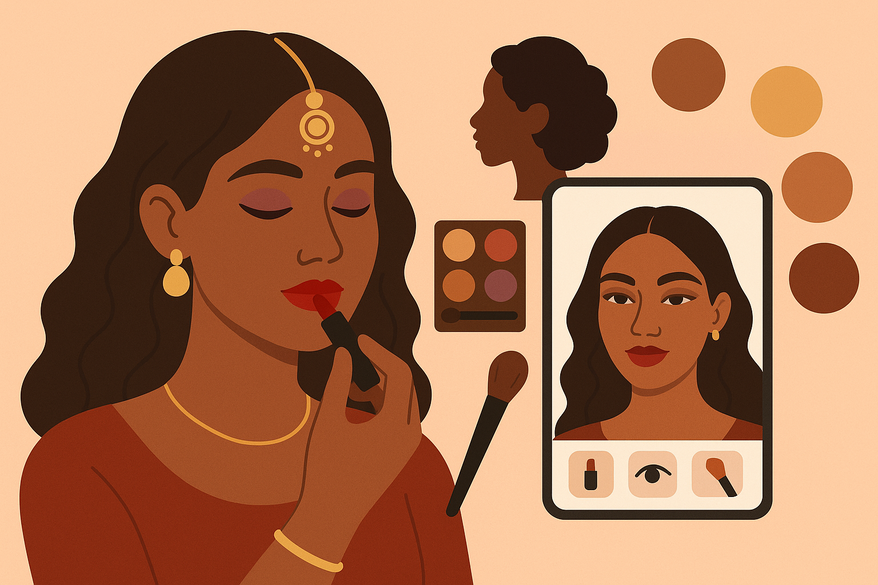
Estimated reading time: 12 minutes
Key Takeaways
- Celebrate diversity: Honor global beauty traditions beyond Eurocentric norms.
- Blend old and new: Merge centuries-old makeup art with modern AI makeup generator tools.
- Practice respect: Understand cultural context to avoid appropriation.
- Personalize your look: Leverage AI for tailored, inclusive beauty experiences.
Table of Contents
- Introduction
- Defining and Understanding Multicultural Makeup Techniques
- Historical Evolution of Makeup Traditions
- Key Makeup Techniques Across Cultures
- Incorporating Innovation: The Role of AI Makeup Generator
- Practical Tips and Product Recommendations
- Conclusion
Introduction
“Multicultural makeup techniques” celebrate the unique beauty features of every culture. In this post, we explore methods rooted in centuries-old traditions—and show how an AI makeup generator brings these looks into the digital age. You’ll learn why diverse makeup approaches matter, see real-world examples, and get hands-on tips to blend heritage styles with today’s tech.
Defining and Understanding Multicultural Makeup Techniques
These techniques are designed to highlight and honor distinctive features, skin tones, and beauty ideals across ethnicities, helping to broaden global beauty standards and move beyond one-size-fits-all norms.
- Challenge beauty ideals: Move past Eurocentric trends.
- Empower heritage: Encourage individuals to embrace and celebrate their cultural looks.
- Foster inclusivity: Promote diversity in fashion, media, and personal expression.
Expert Note: By understanding these methods, makeup professionals can offer respectful, informed artistry and avoid cultural appropriation.
Historical Evolution of Makeup Traditions
Ancient Egypt: Kohl for Aesthetics and Protection
- Defined eyes: Rich black kohl lines shaped and elongated the gaze.
- Spiritual shield: Believed to ward off evil spirits and protect against the sun’s glare.
South Asia: Ceremonial Henna and Face Painting
- Henna (Mehndi): Natural dye applied in intricate wedding and festival patterns.
- Holi pigments: Bright colors symbolized renewal during ritual celebrations.
Ancient Greece vs. Renaissance Europe
- Greek simplicity: Light rouge and natural oils for a radiant glow.
- European pale ideal: Lead-based white powders signaled wealth; rose or ochre blush added contrast.
Globalization’s Impact
- Silk Road exchange: Indian kohl influenced Middle Eastern rituals.
- Colonial trade: New pigments from the Americas reshaped European palettes.
Authority Insight: Makeup historian Dr. Lila Atherton notes, “Cross-cultural trade routes were the beauty industry’s earliest influencers, carrying both formulas and philosophies across continents.”
Key Makeup Techniques Across Cultures
Contouring and Highlighting Origins
- Contouring: Rooted in African ceremonial face painting; used to sculpt cheeks and jaw.
- Highlighting: Light-reflecting powders in classical Japanese theater accentuated facial features.
Eye Makeup Styles
- Egyptian Kohl Eyeliner: Symbolism of protection and royalty; applied with thin sticks using ground minerals.
- Indian Kajal: Smudged lining believed to guard against the evil eye and widen the gaze.
- Japanese Geisha Eyes: White base with red or black accents, crafted with fine-tipped brushes for precision.
Eyebrow Shaping
- Tang Dynasty “Moth Wing” Brows: Wing-like curves painted higher on the forehead for an ethereal effect.
Lip Color and Blush
- Chinese Petite Cherry Lips: Layered red pigments derived from minerals for a small, graceful pout.
- European Pale Faces: White lead powder with pale blush signaled leisure class status.
Incorporating Innovation: The Role of AI Makeup Generator
What Is an AI Makeup Generator?
- Definition: A tool that uses machine learning and vast image libraries to visualize makeup looks.
- Capabilities: Simulate color, texture, and placement on uploaded photos in real time.
For insights on how virtual try-on tech merges AI and AR and to explore personalized, AI-driven beauty advice.
Personalization via AI
- Facial analysis: AI maps bone structure, skin tone, and texture.
- Cultural presets: Choose looks like “Indian bridal” or “Korean glass skin.”
- Adaptive learning: The system refines suggestions based on feedback and trends.
Respecting Diversity
- Cultural encoding: Models learn traditional motifs to avoid insensitive mash-ups.
- Safe recommendations: Filters out looks that may appropriate sacred symbols.
Case Studies / Examples
- Brand A Virtual Try-On (Indian Bridal): Users experiment with red-gold palettes and henna-inspired accents. Brand A Indian Bridal demo.
- Brand B K-Beauty AI Filter: Generates dewy, “glass skin” textures personalized to East Asian undertones; users report 30% higher shade-matching satisfaction.
To see AI makeup generation in action, check out how Makeup Check AI simplifies these advanced workflows:
Democratization and Inclusivity
- Access for all: Anyone with a smartphone can sample looks from around the world.
- Confidence boost: Virtual previews reduce purchase hesitation and product waste.
According to a 2023 beauty tech report, 68% of users felt more confident trying new cultural makeup styles with AI guidance.
Practical Tips and Product Recommendations
Step-by-Step Application Guide
- Research your style: Consult books, tutorials, and museum archives to understand cultural meaning.
- Try an AI makeup generator: Upload a clear, daylight-lit photo and select cultural presets like Egyptian kohl or South Asian bridal.
- Prep your canvas: Cleanse, moisturize, then apply foundation matched to your undertone. See our foundation shade match online guide.
- Follow traditional placement: Contour and highlight per cultural logic; line eyes and shape brows with thin, angled brushes; layer lip tints or blush to reflect heritage aesthetics.
Product Recommendations
- Foundation/Concealer: Brand X Liquid Foundation (50-shade inclusive range); Brand Y Full-Coverage Stick (adaptive pigments).
- Eye Palettes: Earthy mattes for North African looks; jewel tones like emerald and ruby for South Asian styles.
- Eyebrow Tools: Ultra-fine pencils for “moth wing” brows; tint gels in dark brown or black.
- AI-Powered Platforms: App Z scans undertone and recommends products and cultural looks.
Tips for Success
- Patch test: Always trial pigments on your inner arm to check sensitivity.
- Layer lightly: Build color gradually for perfect control.
- Blend carefully: Use damp sponges or fiber brushes to avoid harsh lines.
- Respect symbols: Avoid sacred motifs unless you have cultural permission.
Conclusion
Embracing multicultural makeup techniques connects us to rich global traditions and expands our view of beauty. By pairing centuries-old artistry with an AI makeup generator, you can explore looks from around the world in a respectful, personalized way. Dive into your heritage, experiment with other cultures, and let technology guide you to bold, beautiful self-expression. Share your creations on social media and tag us—your next favorite look might inspire someone halfway across the globe!
FAQ
- What is an AI makeup generator? A tool powered by machine learning that visualizes and suggests makeup looks by analyzing facial features, skin tone, and cultural styles.
- How can I avoid cultural appropriation? Research the origins of each technique, respect sacred symbols, and credit the culture you draw inspiration from.
- Which cultures are featured? We highlight traditions from Ancient Egypt, South Asia, Greece, Renaissance Europe, Japan, and various African ceremonies.
- Can I use these techniques daily? Absolutely—adapt traditional methods to modern, wearable variations that honor their original context.

